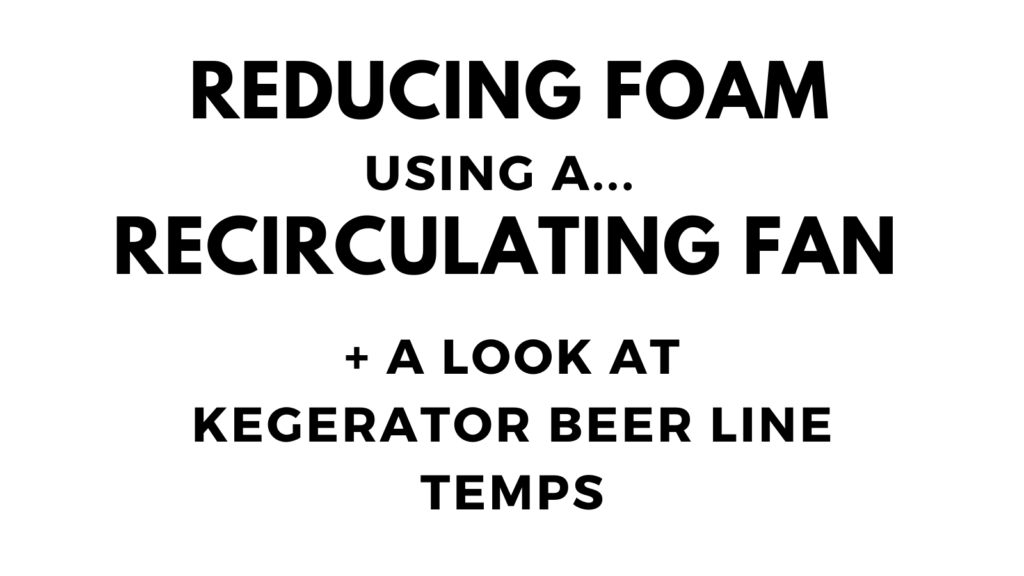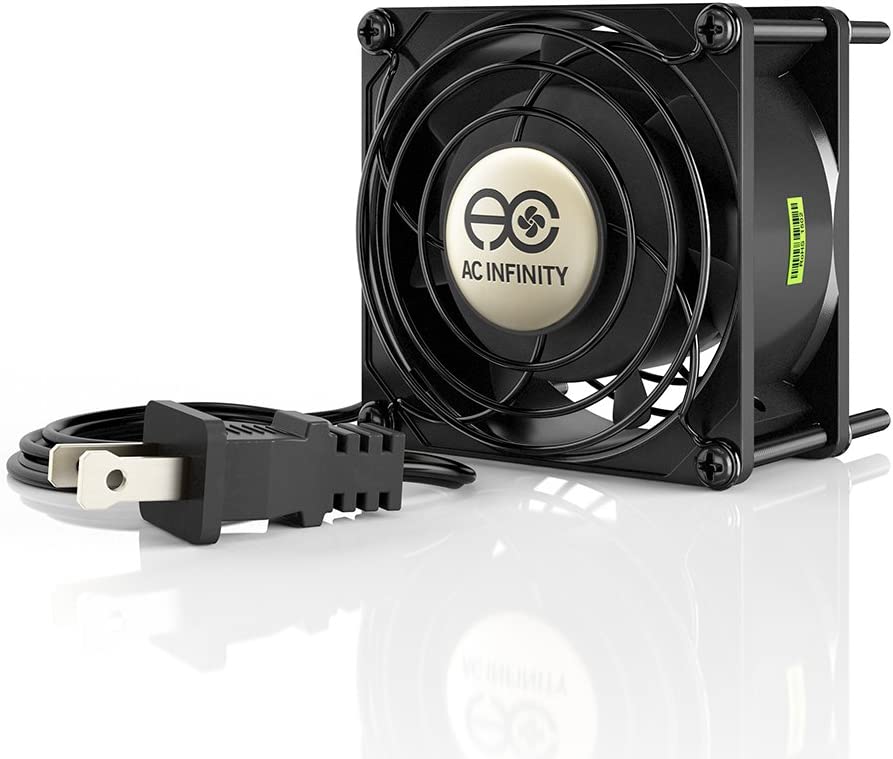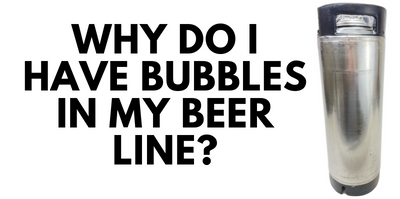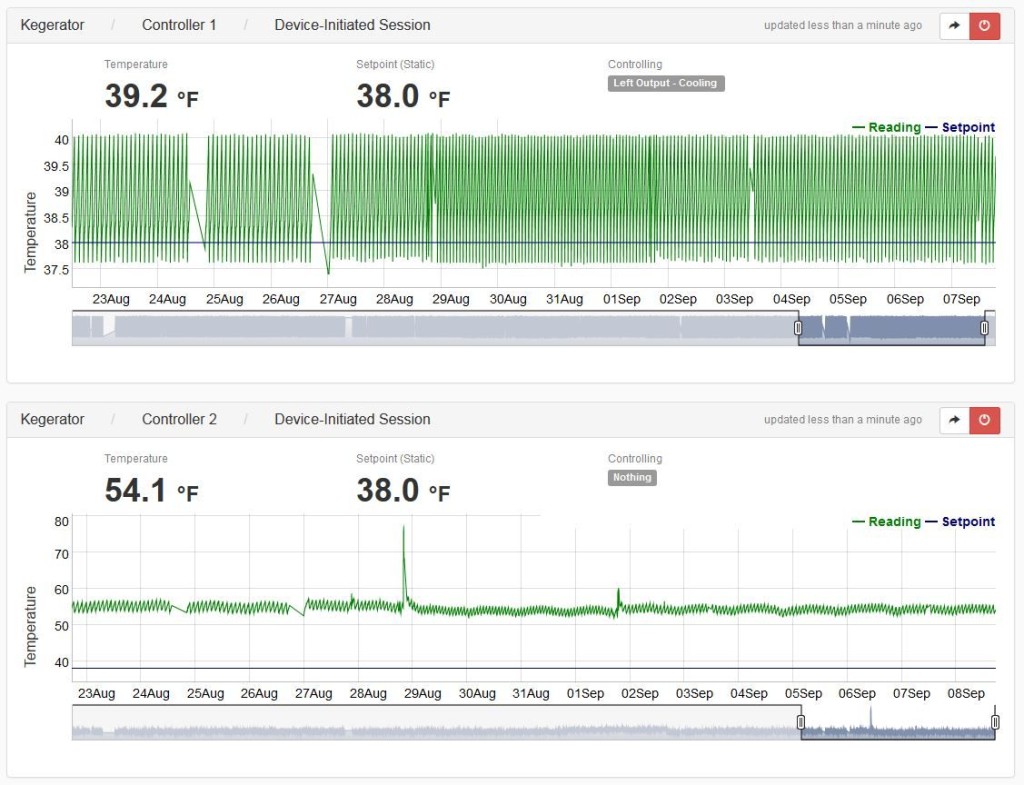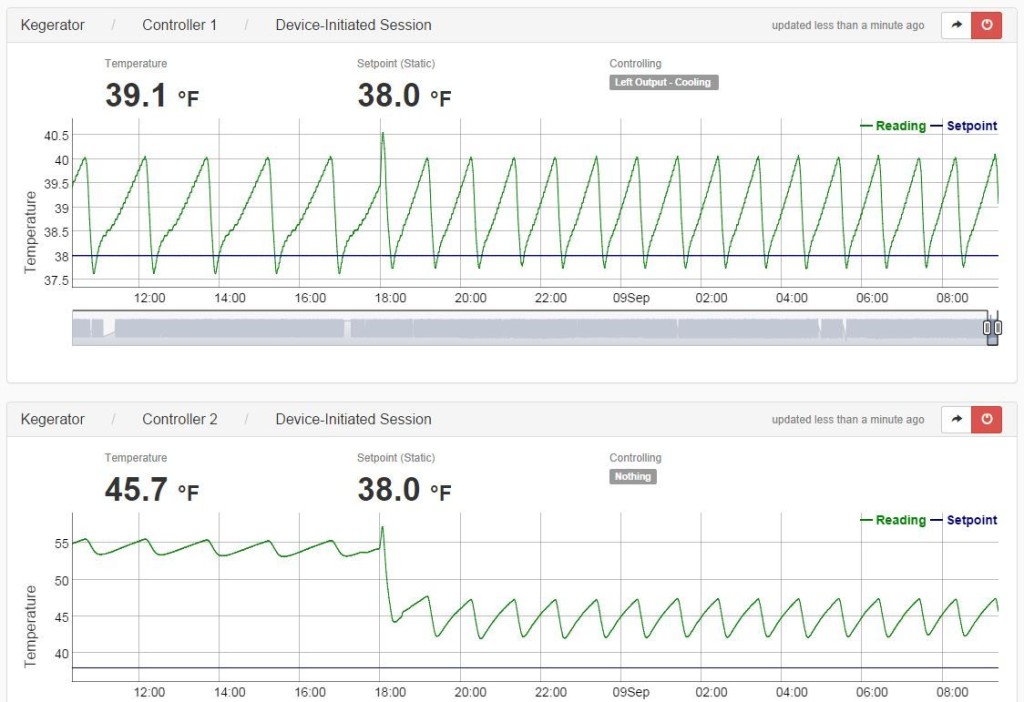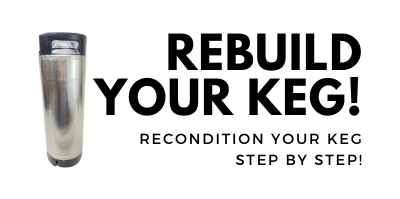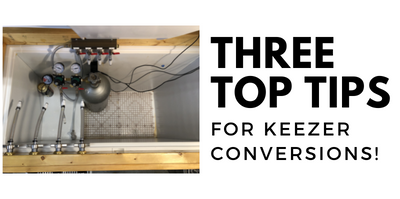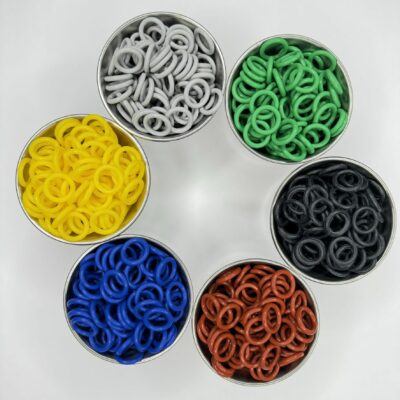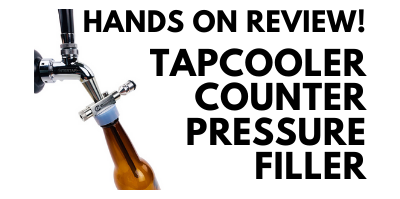
Kegerator Beer Line Temperatures & Reducing Foam with a Recirculating Fan + Limited Time DEAL
Back in 2014, I had what I would call a reasonably well put together and balanced kegerator. In spite of that, for years, I had dealt with the dreaded first foamy pint of beer. After that pint of beer, beer would pour great. That is until a significant delay between pours – overnight or a few hours.
Related Resources – Foam Control & Kegerator Balancing
- What Does a Flow Control Faucet Do?
- Step by Step Balancing Your Kegerator Draft System
- Kegerator Foam Problems? – Fight the First Foamy Pint!
- Why Do I Have Bubbles in My Beer Line?
Limited Time Deal on the Fan I Use!
 I have this fan and use it in kegerator as a recirculation fan.
I have this fan and use it in kegerator as a recirculation fan.
What are Other’s Saying? Search this product’s Amazon reviews for “kegerator” – affiliate link, note that multiple variations of this product may be available, as such a different version may appear at this link
As of this update these are selling for $17.99. Apply the 10% off coupon available on the product page and the price drops to $16.19 at checkout. Shipping is also free to many US addresses with Prime Membership [Try Prime for Free] or a qualifying order. Prices, promotions and availability can change quickly. Check product page for current info – More About Prices
AC Infinity AXIAL 8038, Quiet Muffin Fan, 120V AC 80mm x 38mm Low Speed, UL-Certified for DIY Cooling Ventilation Exhaust Projects – affiliate link, note that multiple variations of this product may be available, as such a different version may appear at this link
Diagnose Other Issues
A Closer Look at Kegerator Beer Line Temps
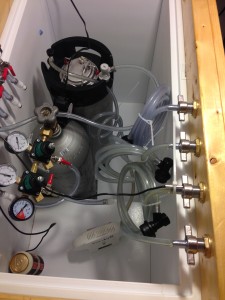 The setup. I have two temperature probes in my kegerator. One is zip-tied to the top of a beverage line. The other is zip-tied to a can of beer. That’s how I have kept the probe in my kegerator for a long time with the thinking that the mass of the can of beer will help to stabilize temperature readings and give overall stable and accurate readings. That can is sitting on the compressor hump of my Kenmore Deep Freeze (8.8 Cu ft Model 16932, out of production). That puts it about mid keg.
The setup. I have two temperature probes in my kegerator. One is zip-tied to the top of a beverage line. The other is zip-tied to a can of beer. That’s how I have kept the probe in my kegerator for a long time with the thinking that the mass of the can of beer will help to stabilize temperature readings and give overall stable and accurate readings. That can is sitting on the compressor hump of my Kenmore Deep Freeze (8.8 Cu ft Model 16932, out of production). That puts it about mid keg.
Beer Line Temps – No Recirculation Fan
The cause of the problem is pretty clear. Heat rises. That means the top of your kegerator is going to be warmer than the bottom of your kegerator. That warmer beer foams when it comes out. The faucet and shank are also warmer. That warmth adds to the problem.
How much is the temperature variance? Of course, this will vary from setup to setup and climate to climate. I was relatively shocked by the temperature difference in my own kegerator.
The top reading about mid keg and the bottom reading is the top the top of my beer lines. These are about 22″ apart. This graph shows a point in time variance between the two of 14.9 degrees F. My beer is about the temperature I want it, but the top of my serving line is much warmer. That difference in temperature causes the first pint to have too much foam. Pours that happen soon after the first are fine. The tubing, shank and beer are relatively cool.
Adding a Recirculating Fan to Reduce Beer Foam
This article contains affiliate links. We may make a small percentage if you use our links to make a purchase. You won’t pay more and you’ll be supporting Homebrew Finds and more content like this. Thank you for your support!
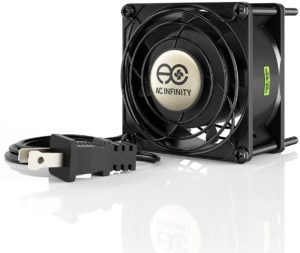 I chose AC Infinity’s Pre-Wired LS8038A-X 115 Volt AC Fan – also for Canadian Brewers via Amazon.ca, because it was reasonably priced, got great reviews and it’s already setup to use AC. Note: the appearance and name of this unit has changed since I first wrote this article
I chose AC Infinity’s Pre-Wired LS8038A-X 115 Volt AC Fan – also for Canadian Brewers via Amazon.ca, because it was reasonably priced, got great reviews and it’s already setup to use AC. Note: the appearance and name of this unit has changed since I first wrote this article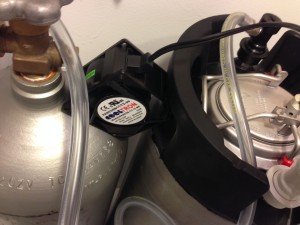 I placed the fan on my CO2 tank, leaning up against a keg.
I placed the fan on my CO2 tank, leaning up against a keg.
Results!
This graph illustrates the effects of adding the recirculation fan inside of my kegerator. Prior to the fan, the tubing temperature spiked to around 55.4 deg F. After the deep freeze kicked on, the tubing dropped to around 53.15 deg F. Not a big change. That averages out to 54.275 deg F.
You can see the point in this graph where the fan is turned on. The temperature drops sharply. The new is high 47.3 deg F and the new low is 42.13 deg F for an average of 44.715 deg F.
- Before – Avg Tubing Temp = 54.275, Avg Mid Keg Temp = 38.83, Dif = 15.445 deg F
- After – Avg Tubing Temp = 44.715, Avg Mid Keg Temp = 38.89, Dif = 5.825 deg F
The recirculation fan dropped my tubing temperature by 9.62 deg F (62%). Practically speaking, that difference is enough to make every pint pour right. My first pint pours correctly… I like that!
Related: Rebuild Your Kegs!
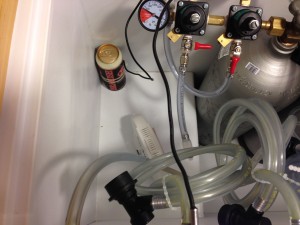
 A look down. You can see my Eva Dry E-500 (Hands on Review) standing by taking care of condensation. I’ve heard from others that a recirculation fan makes the Eva Dry work even better. My kegerator has remained dry (with the help of the Eva Dry) since installing the fan.
A look down. You can see my Eva Dry E-500 (Hands on Review) standing by taking care of condensation. I’ve heard from others that a recirculation fan makes the Eva Dry work even better. My kegerator has remained dry (with the help of the Eva Dry) since installing the fan.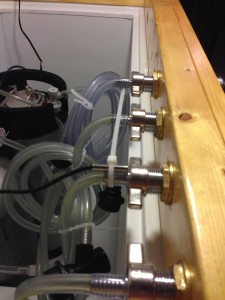 A look down my collar. As you can see, I’m no wood worker. Having said that, I spent a lot of time working on the fit and finish of this collar. The end result was good. If you let the deep freeze door fall shut the resulting noise, sounds like a factory seal sort of thump. I did put weather stripping on the bottom to seal between the collar and the deep freeze. Adding insulation to the collar would, presumably, also help maintain temperatures and reduce foaming.
A look down my collar. As you can see, I’m no wood worker. Having said that, I spent a lot of time working on the fit and finish of this collar. The end result was good. If you let the deep freeze door fall shut the resulting noise, sounds like a factory seal sort of thump. I did put weather stripping on the bottom to seal between the collar and the deep freeze. Adding insulation to the collar would, presumably, also help maintain temperatures and reduce foaming.
I purchased this fan in April of 2014 and started using it soon after. As of this update in August of 2020 the same fan continues to work great. It has been running continuously in my kegerator years. Note – I do use an Eva-dry E-500 in my kegerator to help handle kegerator condensation. See: Handling Kegerator Condensation with the Eva Dry E-500. I theorize that keeping condensation under control may play a big part in fan longevity.
What are others saying? Search this product’s Amazon reviews for “kegerator” and “keezer” – affiliate link, note that multiple variations of this product may be available, as such a different version may appear at this link
- AC Infinity AXIAL 8038, Quiet Muffin Fan, 115V 120V AC 80mm x 38mm Low Speed, for DIY Cooling Ventilation Exhaust Projects – affiliate link, note that multiple variations of this product may be available, as such a different version may appear at this link
- Canada: AC Infinity AXIAL 8038, Quiet Muffin Fan, 115V 120V AC 80mm x 38mm Low Speed, UL-Certified for DIY Cooling Ventilation Exhaust Projects – affiliate link, note that multiple variations of this product may be available, as such a different version may appear at this link
Related: Three Top Tips for Keezer Conversions!
Diagnose Other Foam Related Issues
More Homebrew Finds!
- Last 50 Finds!
- Top Deals – a curated list of the best deals
- Homebrew Reviews – one of the largest libraries of homebrew reviews in existence!
- Our Top Posts – tips, how-tos, resources posts and more
- Let’s be Friends!
Related Resources – Foam Control & Kegerator Balancing
- What Does a Flow Control Faucet Do?
- Step by Step Balancing Your Kegerator Draft System
- Kegerator Beer Line Temperatures & Reducing Foam with a Recirculating Fan
- Kegerator Foam Problems? – Fight the First Foamy Pint!
- Why Do I Have Bubbles in My Beer Line?
Recent Deals!
10 Most Recent Homebrew Resource Posts & How-To’s!
We are Homebrew Review HQ! Our 10 Most Recent Reviews
Also: Kegerator Tips & Gear | Keg Repair Part #s | Recent Keg Finds
Our Top Draft Resources!
Check our our Top Draft Related Resources- Commentary: Pin Lock Keg Pricing and Availability
- Check Your CO2 Regulator for Leaks!
- How to get a keg ready for first use? New Keg Cleaning and Prep
- Portable Draft Beer Serving Options!
- Pin Lock Keg Pricing and Availability
- The Most Difficult Spot to Check for CO2 Leaks
- Keg O-Ring Materials Selection! – EPDM, Silicone and Buna-N?
- Why Do I Have Bubbles in My Beer Line? Diagnosing and Fixing Kegerator Foam Problems
- Five Benefits of Using Corny Kegs As Fermenters
- Rebuilding & Reconditioning Homebrew Kegs!
- Food Safe Replacement Keg O-Rings in Bulk
- Hands on Review: Kegland DuoTight Fittings & EVABarrier Tubing!
- Why Won’t My Beer Carbonate? Fixing Draft Beer Carbonation Problems
- What Does a Flow Control Faucet Do?
- Upgrade Your Kegerator – 6 Improvements!
- Serve Homebrew on Any Kegerator & Convert Commercial Kegerator to Homebrew
- Tips and Gear for Growler Filling
- What’s the Difference Between Ball Lock Kegs and Pin Lock Kegs?
- Checking for Draft System CO2 Leaks – Using The Pressure Gauge Method
- Tip: Consider Oetiker Stepless Clamps for Kegerator Gas and Beer Lines
- Hands On Review: Inkbird ITC-308 Dual Stage Temperature Controller +WiFi Version
- Universal Poppets Tips and Tricks!
- Convert Your Mark II Keg & Carboy Washer to a Recirculating Draft Line Cleaning Pump!
- Step by Step: Finding and Fixing Keg CO2 Leaks
- Kegerator Temperature Probe Placement – To Immerse or Not To Immerse? – three tests to determine optimal pla…
- Kegerator Beer Line Temperatures & Reducing Foam with a Recirculating Fan
- Kegging CO2 Use Estimations and Calculations
- Balancing Your Kegerator Draft System
- Building a Simple Ball Lock Draft Line Flushing Setup
- Build a Recirculating Draft Line Cleaning Pump
- Home Brew Keg Roundup – New & Used, 5 and 2.5 Gallon & More!
- Damp Kegerator? Fix Kegerator Condensation
- Homebrew Temp Controller Roundup! – Kegerator and Fermentation – concepts, applications and models
- Bulk Keg Orings and Keg Parts Reference
This post may contain affiliate links. We may make a commission when you use our links. This will never cost you extra. Thank you for supporting Homebrew Finds!
greatdealsThis is a Top Post! See: All Top Posts
Make sure the components you use are compatible and rated for your intended application. Contact manufacturer with questions about suitability or a specific application. Always read and follow manufacturer directions. tag:lnksfxd toppost:recircfan rs:8 tag:tpru tag:watch1
